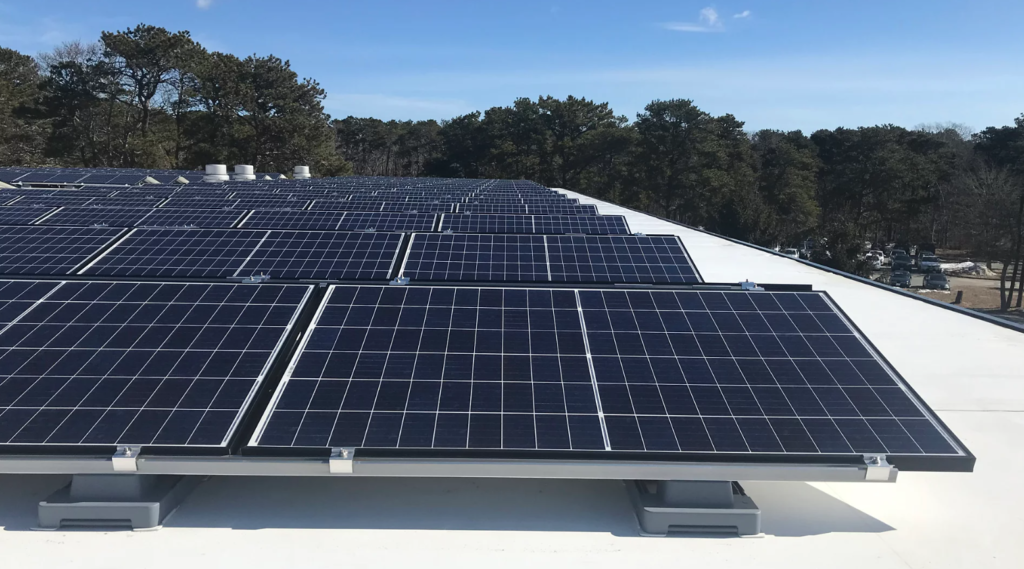Solar roofing represents a significant leap in sustainable home energy solutions. With the growing concerns about climate change and rising energy costs, more homeowners consider Sunstyle a viable option. In addition to reducing electricity bills, solar roofs contribute positively to environmental conservation efforts. Residential and commercial structures comprise much of the world’s energy usage. By incorporating solar technology onto rooftops, structures can harness sunlight to generate energy, lessening dependence on fossil fuels and restricting greenhouse gas emissions.

Integrating solar technology in roofing is an innovative way to tackle the dual challenges of energy consumption and climate responsibility. As technology advances, solar roofs become more aesthetically pleasing and efficient, appealing to a broader range of homeowners.
Benefits of Solar Roofing
The benefits of solar roofing extend beyond just saving on energy costs. Solar roofs have the potential to boost your home’s total worth, offer independence in energy supply, and lower the amount of carbon emissions. Studies indicate that houses equipped with solar energy systems are sold quickly and for a higher value than those without such systems. This added financial value offers numerous non-monetary benefits, such as contributing to energy security and promoting environmental sustainability. Homeowners are increasingly drawn to Sunstyle solutions, which seamlessly blend with conventional roofing materials while harnessing the sun’s power.
Aside from financial perks, solar roofs offer an aesthetic edge, blending modern technology with sleek design. Homeowners can experience the advantages of cutting-edge technology while still keeping an attractive aesthetic. Moreover, solar roofing systems often have significant warranties, typically 20 to 25 years, providing long-term reliability and protection against future energy rate hikes.
How Solar Roofs Work
Solar roofs integrate photovoltaic cells into roofing materials, converting sunlight directly into electricity. These cells capture and convert sunlight throughout the day, even when it’s cloudy. Each photovoltaic cell contains layers of silicon and other conducting materials. When sunlight hits these cells, it excites the electrons, causing them to flow and generate direct current (DC) electricity. This DC electricity is converted to alternating current (AC) by an inverter, making it suitable for home use.
Understanding how solar panels function can help homeowners maximize their investment. Progress in solar technology has enhanced the effectiveness of photovoltaic cells, enabling them to convert a more significant amount of sunlight into electrical energy. Some modern solar panels also feature bifacial technology, which captures sunlight from both sides of the panel, increasing the overall energy output.
Cost and Efficiency
Although the initial cost of installing solar roofing may be high, the savings on utility bills and maintenance in the long run can offset this expense. The Department of Energy explains that solar panel efficiency has significantly improved over the years, making them a wise investment for the future. Modern panels can convert a higher percentage of sunlight into electricity, enhancing overall efficiency.
Initial installation costs can vary depending on factors such as the size of the system, the type of panels, and labor charges. However, many companies offer financing options, making it easier for homeowners to spread out the investment over time. Furthermore, the upkeep expenses for solar panels are relatively inexpensive. Typically, cleaning the panels and checking for any obstructions is required to keep the system functioning efficiently.
Solar Incentives
Various governments and institutions offer incentives and rebates for homeowners installing solar roofs. These rewards can potentially decrease the installation’s total expense significantly. Keeping abreast of your area’s current solar investment tax credits and other incentives is wise. Many local governments also provide additional support through grants, loans, and rebates, further reducing the financial burden on homeowners.

Local incentives can also play a crucial role. Many states and municipalities offer additional rebates and tax benefits to encourage the adoption of solar technology. These incentives can substantially affect the return on investment for solar roofing. Some regions also offer performance-based incentives, rewarding homeowners with payments for the energy their solar systems generate over time.
Installation Process
The installation of solar roofs is a thorough process that involves several steps, such as assessing your home’s energy needs, conducting a roof inspection, and final installation. It is essential to work with certified professionals to ensure the job is done correctly and efficiently. The first step involves a comprehensive assessment of your current energy usage and a detailed roof inspection to determine whether the roof is suitable for solar panels.
Firstly, an assessment determines your energy usage and roof suitability. Then, a customized plan is created, followed by the installation, which can take a few days to a week. Finally, the system is tested and connected to the grid. The installers will handle the necessary permits and paperwork throughout the process, ensuring compliance with local regulations and safety standards.
Maintenance and Longevity
Solar roofs require minimal maintenance, making them highly convenient for homeowners. Regular cleaning and occasional inspections can ensure optimal performance and longevity. Most solar panels come with a warranty of 25 years, providing peace of mind to homeowners. Essential maintenance involves cleaning the panels yearly to remove dust, dirt, and debris that may obstruct sunlight.
Keeping panels free from debris and checking connections periodically can optimize efficiency. Engage professionals for annual inspections to prolong the lifespan and effectiveness of your solar setup. These inspections typically involve checking for wear and tear, ensuring electrical components function correctly, and assessing the system’s overall health.
Is Solar Roofing Right for You?
Whether solar roofing is the right choice for your home depends on various factors, such as location, energy needs, and budget. Researching and consulting with experts can help you make an informed decision. One of the primary considerations is the amount of sunlight your home receives throughout the year, as this will directly impact the efficiency and output of your solar system.
Consider factors like local climate, roof condition, and available incentives. Engage with other homeowners and read reviews to gather insights. By analyzing all these aspects, you can determine if solar roofing aligns with your energy goals and financial plans. Additionally, potential shade from nearby buildings or trees should be evaluated, as it may affect the performance of solar panels.



